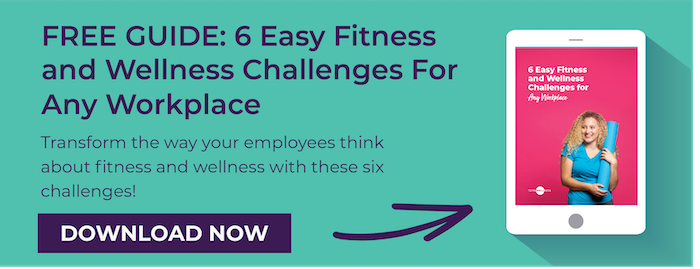 Does running 1-mile a day do anything?
Does running 1-mile a day do anything?
You bet it does.
The benefits of running a mile a day go beyond just improving your best personal running time. In fact, there are amazing benefits worth considering if you’re looking at upping your daily workout or exploring a new fitness routine. Research shows even five to 10 minutes of slow daily running can drastically reduce cardio health risk!
Want to increase your cardiovascular health, lose weight, and more?
Then check out these benefits of running just one mile daily!
The Biggest Benefits of Running a Mile a Day
We’ve all heard the joke that if someone who is fitness adverse is running, you better do the same, too, because it means there is something chasing them.
But what if the mindset changed to running can be fun? Not only that, it has a myriad of health benefits that can improve life quality. Running as a form of exercise can also turn into a new favorite hobby or supplement a current exercise routine that may have gotten stale.
Here’s a look at why you may want to consider running — even just a mile — daily:
1. Lifts Mood
Need a mood lift? Take a run. Research shows that running acts similar to an antidepressant due to the release of endorphins and serotonin. WebMD reports running at a moderate to vigorous level is helpful for mental health, thanks to the increased blood circulation to the brain that responds to stress.
2. Acts as a Natural Stress Reliever
Instead of unhealthy habits that “relieve stress” like smoking or drinking, a healthier option is hitting the asphalt for a jog instead. Many people find physically moving and getting into the motions of running almost turns into a “meditative” state. This can provide further benefits including resilience, improved patience, and more.
Related: Mind Racing? Feeling Overwhelmed? Try Meditation for Stress
3. Improves Cardiovascular Health
Running is one of the best exercises to get your heart rate up quickly. When you get your heart pumping hard, it keeps the muscles working harder which maintains strength. It also increases blood flow and decreases the risk of stroke when you regularly do heart-pumping exercise like running.
4. It’s Free
Just like walking, running is a free exercise activity anyone can do anywhere. No gym membership is needed. Change up your running route for different scenery views to keep the run interesting each day!
5. Helps with Weight Maintenance
Every mile you run burns around 100 calories. That’s if you’re not adding hills, ankle, or wrist weights, or other challenges to your workout as you go along. Not big into the idea of running? Mayo Clinic reports you can get similar results with walking when it comes to losing weight. Walking burns around the same amount of calories. If you walk — or run — 35 miles weekly, you’ll lose around a pound a week if you’re not increasing your food intake from what you ate before.
6. Reduces Risk for Serious Health Issues
If your family history is dotted with health issues like diabetes, obesity, and other chronic conditions, taking prevention methods may help you keep it away. Research indicates running plays a role in reducing the risk of health concerns like heart disease, cancer, type 2 diabetes, high cholesterol, and obesity.
7. Improves Knee Health
Believe it or not, running can actually be good for the knees. Northwestern Medicine reported several studies show that regular runs can strengthen joints and protect against later development of osteoarthritis later on. Whether you’re a seasoned runner or newbie, be sure to pay attention to any signs of pain. Most times it’s related to iliotibial band syndrome (ITBS) and patellofemoral pain syndrome (PFPS), but check with your doc when it comes to chronic knee pain.
8. Meets the Daily Recommended Aerobic Requirement
Like eating well, exercise is one of those activities the body requires often to maintain optimal health. The Department of Health and Human Services recommends healthy adults aim for a minimum of 150 minutes of moderate aerobic activity weekly. Or, 75 minutes of vigorous activity a week. Doing so keeps your muscles strong and your heart healthy. Running falls right into the category, so lace up your shoes and get out the door!
9. May Keep Away the Common Cold
Most of us will do anything to keep a cold away. In that case, running is thought to boost the immune system and reduce stress hormone levels — all of which play a role in your overall health. Regular exercise of any kind — yoga, walking, kickboxing, dancing, and the like — all add up and count toward your exercise “bank deposits” so to speak.
Related: Cold & Flu Season: How to Prevent a Cold When You Feel It Coming
A Few Running Safety Tips
As with any new exercise program, it’s important to ease into it. You won’t be a marathon runner on your first day. Take your time to read up on running and consider joining a local running group to keep you motivated.
Use these tips for safely easing into running:
- Consult your doc - Before starting any new major exercise program, it’s smart to chat with your physician first. This is especially important if you have any musculoskeletal issues or cardiac issues.
- Listen to your body - Be patient and start where your body is comfortable. Sprints won’t come naturally the first day. Walk, then jog, then run. Work your way up to longer running stretches.
- Invest in quality shoes - What you run in for shoes is as equally as important as your running form. You want shoes that provide stability and plenty of cushioning to prevent blisters. Ensure there is enough toe width as well.
- Pay attention to weather - Skip running outside when it’s too hot or too cold. Instead, opt for an indoor running trail at a gym, a different workout, or a treadmill option.
- Avoid night running - For obvious reasons, running at night is dangerous. If it’s the only time you can workout, wear light-colored clothing with reflectors and wear a headlamp or safety lights. Let someone know your running route, too.
- Stay hydrated - Water is essential to stay hydrated throughout the day, but it’s even more essential when you’re losing fluids through sweat. The American Council on Exercise recommends seven to 10 ounces of water every 10 to 20 minutes of a workout.
While running can be challenging, it also can be rewarding. This is especially true if you’re looking to lose weight, gain muscle tone, or simply lower your numbers like cholesterol or blood pressure. If you absolutely dislike it, remember there are a ton of other healthy physical activities out there to try with very similar benefits.
Do you enjoy running? How did you first get into it and keep with it? Share your insight in the comments below!



